Upright Aerial Lift and Boom Lift Parts
Posted on
Upright Aerial lift is also known as Aerial device, and aerial work platform (AWP) or even Mobile Elevating System (MEWP). No matter what name is used, its main purpose stays the same: It is a device used to provide access for people and equipment at different areas, usually at height. Its flexible and long access reach differentiates them from other access equipment like elevators and cranes. A boom supported lift platform can be positioned outside the base giving them long reach possibility for tools, materials or even personnel and workers.
There are primarily used for: painting, construction, electrical installations, piping installations, sand blasting, building maintenance, and any other application where workers and their tools need to get up in the air to perform their work. They are usually supported by motorized base giving them more flexibility. These lifts can be powered by gasoline, propane, gas/propane, or diesel engines or they can be electrical.
They are designed to lift limited weight, usually not more than a ton. Also, they can be operated by only one person. That’s why they are designed to be controlled from the platform.
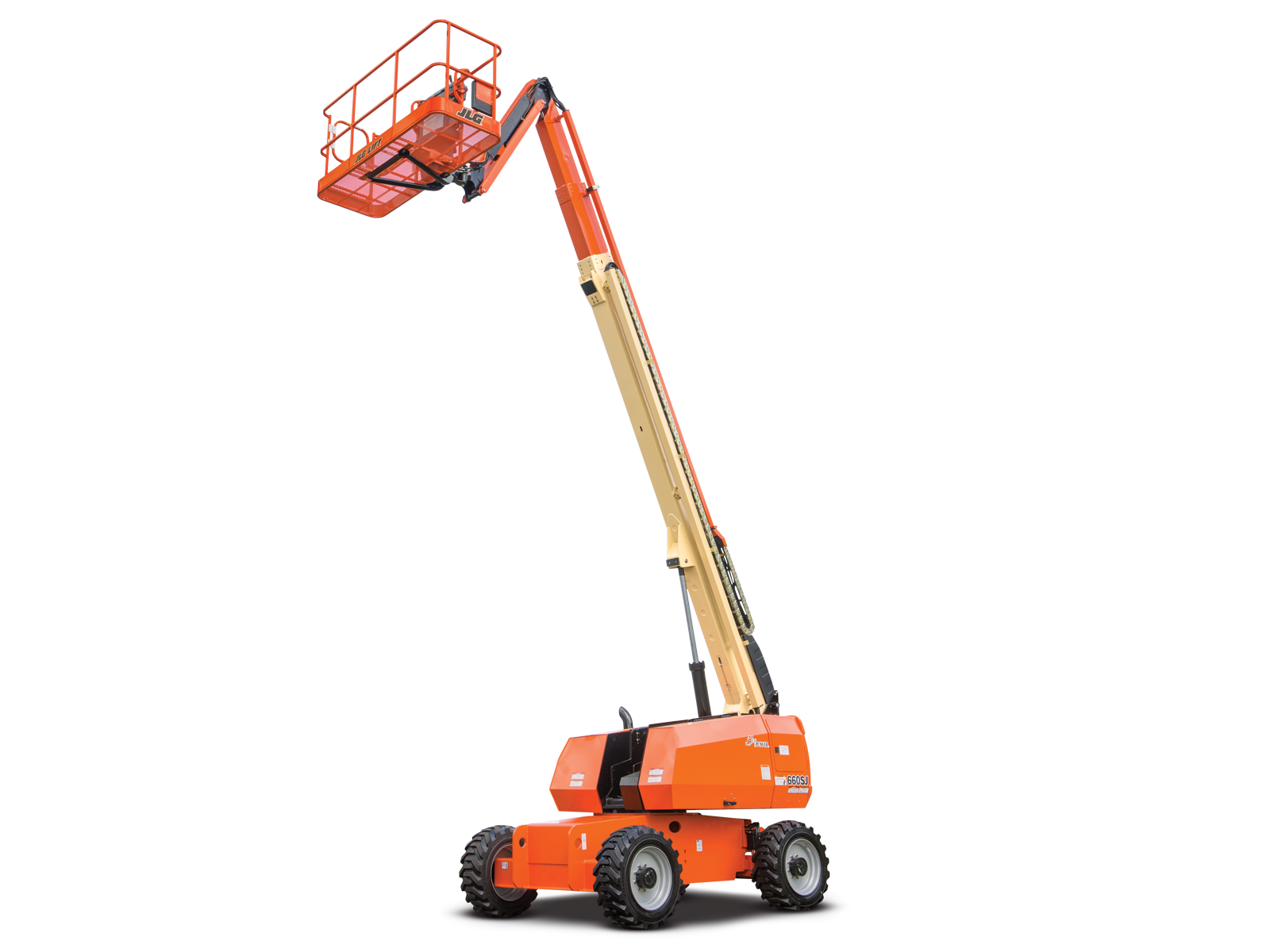
Each upright areal lifts are required to have following features:
Controls (upper and lower)
Lifting Platform
A Load capacity plate
Passive brake that enables holding the unit at any height
Emergency stop brakes located both on the platform and the base that stops all the movement. It is usually located on or near the base frame of the unit.
Controls vary by model, but are frequently either buttons or a joystick. The type and complexity of these will depend on the functions the platform is able to perform. The controls can control features such as:
- Vertical movement
- Lateral movement
- Rotational movement
Platform / basket movement — normally, the system automatically levels the platform, regardless of boom position, but some allow overrides, tilting up to 90° for work in difficult locations.
Ground movement
The power assisted drive and lift functions of an AWP are controlled by an operator, who can be situated either on the work platform itself, or at a control panel at the base of the unit. Some models are fitted with a panel at both locations or with a remote control.
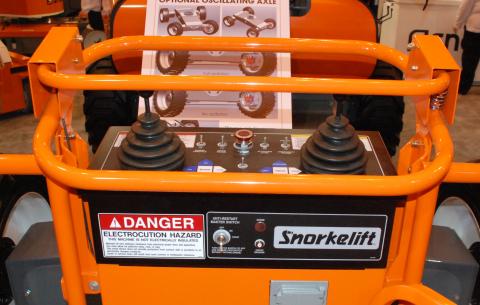
Upright Aerial Lift and Boom Lift Parts
It is necessary to know correct parts for your upright aerial lift and boom lift parts. Knowing the parts will help you and our parts specialists when requesting parts and reporting issues:
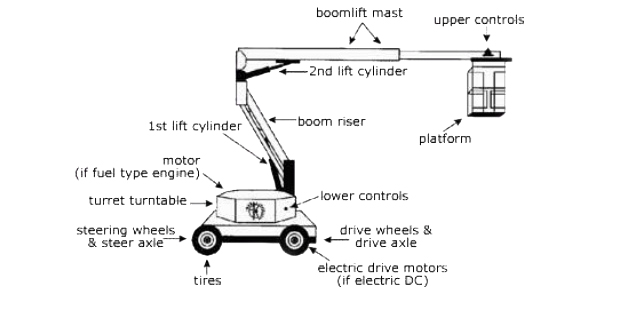
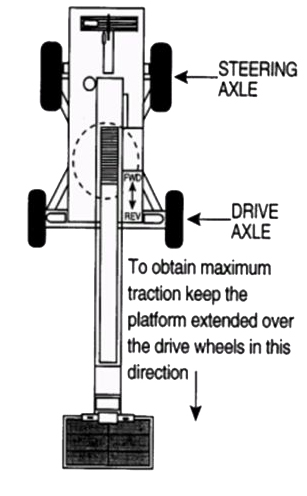
There are a few types of boom lift tires:
- Pneumatic – that are filled with air
- Liquid filled
- Monofilled - filled with special kind of liquid that turns solid over time. They are much heavier and add to counter weight of the lift.
The center of the gravity of the counter weight is used to counter-balance the center created by the load weight and elevating assembly. Its main purpose is to keep the boom lift in the upright position.
Lifting mechanisms
There are several types of aerial work platforms which all have different features depending on the application. The key difference is in the base which drives the working platform to the location. Most of those lifting mechanisms are powered by hydraulics.
Aerial devices are powered on diesel or gasoline on the base unit and operated on hydraulics. Newer models are lightweight so they are made powered by the electricity. The name used for this type of AWP is “cherry picker”. This nickname came from its origins. It was originally designed for picking the fruit from high trees.
A scissor lift is a type of platform that can usually only move vertically. The mechanism to achieve this is the use of linked, folding supports in a "X" pattern. The platform may also have an extension to allow closer access to the work area, because of the limits of vertical-only movement.
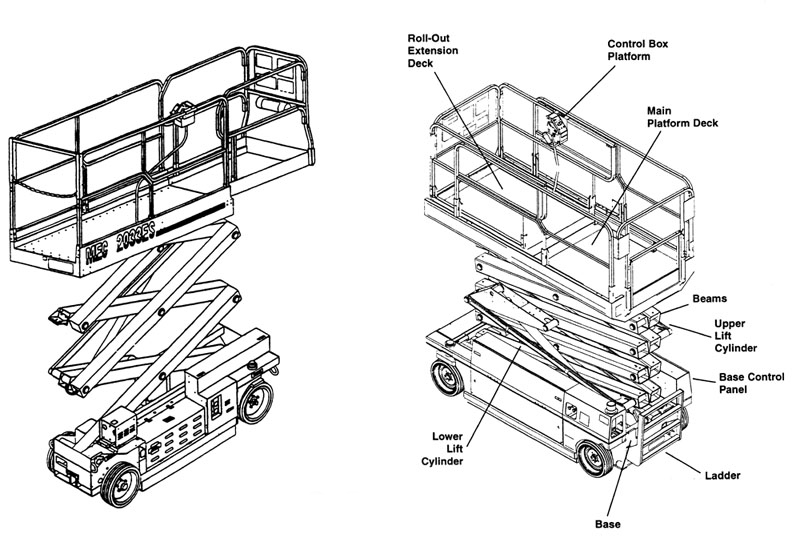
There are also a number of smaller lifts that use mechanical devices to extend, such as rack and pinion.
Mounting mechanisms
Depending on their ability to move, we can divide them as unpowered, Self powered and vehicle mounted.
Unpowered are usually smaller units have no motor drive and require external force to move them. Dependent on size and whether they are wheeled or otherwise supported, this may be possible by hand, or may require a vehicle for towing or transport.
Self powered units are able to drive themselves around. The power can be almost any form of standard mechanical drive system, including electric or gasoline powered, or in some cases, a hybrid.
Vehicle mounted units are mounted on a vehicle, usually a truck or it can be mounted on a flat back pick up van. Vehicle provides mobility, and may also help stabilize the unit.
Our Products:
Contact Sourcefy:
Address:#108-209 Glen Cove Rd
Carle Place, NY
United States 11514
Email: support@sourcefy.com
Toll-free: 1-855-585-4430
 Loading... Please wait...
Loading... Please wait...


